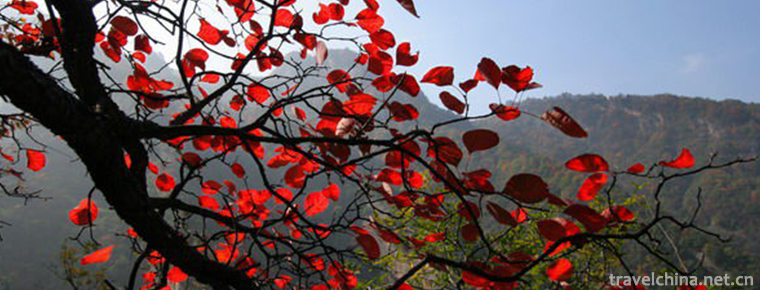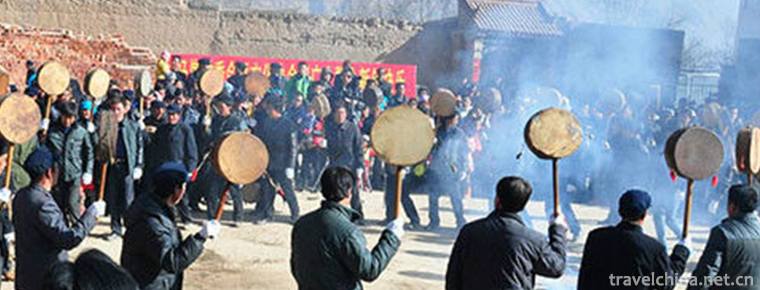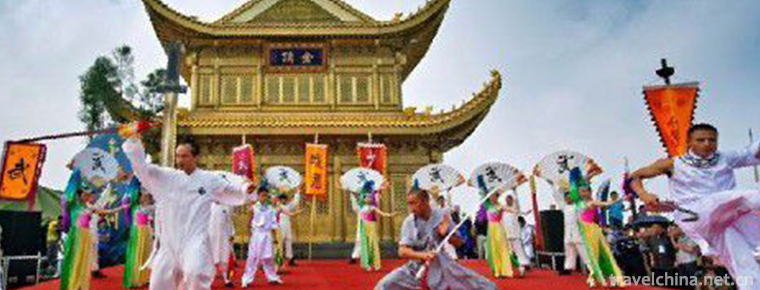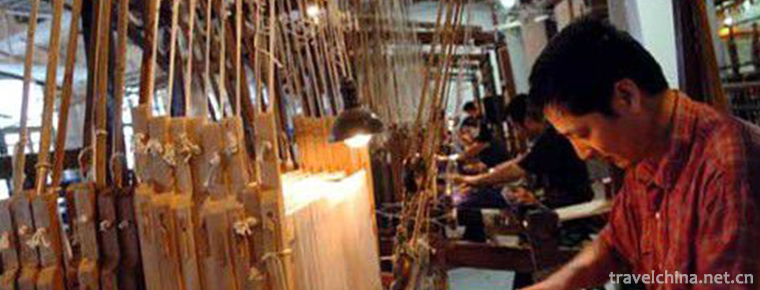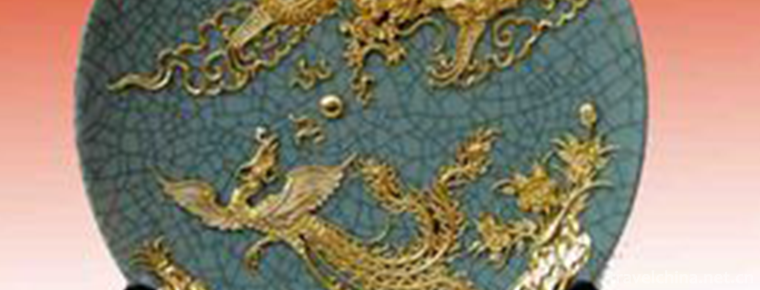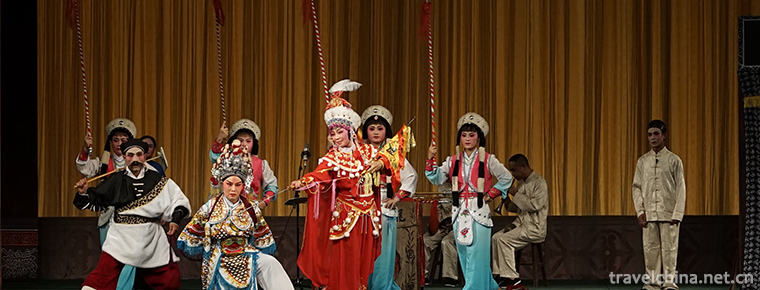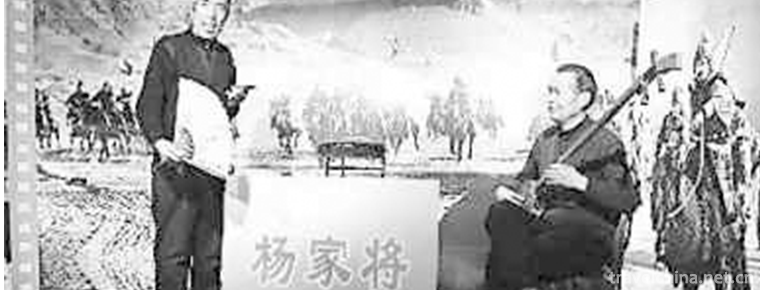Tongwei Opera
Tongwei Opera
Tongwei Xiaoqu Opera is a kind of traditional Xiaoqu Opera popular in Tongwei County. In the Ming and Qing Dynasties, Tongwei folk artists absorbed various flavors of Longdong Daoqing, Wanwanwanqiang and folk songs on the basis of Shaanxi, Gansu, Ningxia and Qinghai folk songs, and continuously enriched and developed them. The local flavor is strong, the script story is simple and easy to understand, which embodies the people's simple and kind, loyal and honest human nature characteristics and the persistent spirit of pursuing good love between men and women.
In 2011, it was selected as the third batch of national intangible cultural heritage list.
Inheritance Significance
People's Daily once criticized that flute music creation is too original nowadays. Some composers and performers pursue novelty, novelty and novelty blindly and deviate from the life of the general public. They cited two examples of "Pushing the Whip to Urge Horses to Transport Food Busily" and "New Pastoral Song", saying that nowadays no flute can surpass these two works. Why is that? I think today's composers and performers are all above the high level, earn extra money with high wages, enjoy the convenience and speed of metropolis life, and take the western music theory and technique as their own "Bible", who can really go deep into the folk to absorb the nourishment of folk music and traditional music, this is the essence and essence of our music culture. "Pushing the Whip to Urge Horses to Transport Grain Busy" is based on the Northeast music "Herdsmen's New Song" from the Mongolian people, in addition, there are numerous similar examples. Throughout those works with long-term artistic vitality and influence, all of them are permeated with folk music materials from the masses.
Finally, we think that folk songs like Tongwei Xiaoqu have their own value and significance. We must attach importance to it, study it and use it to serve our research and music creation.
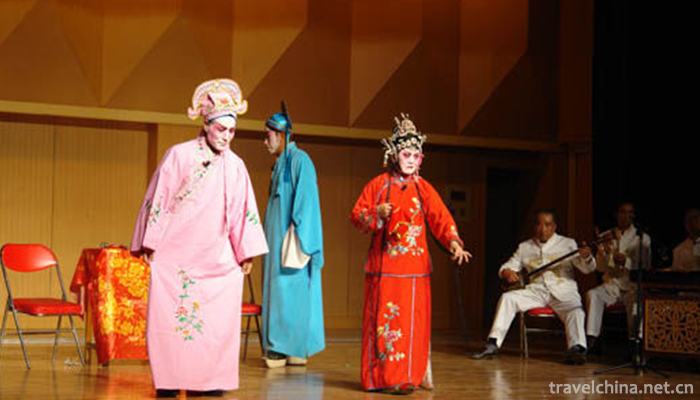
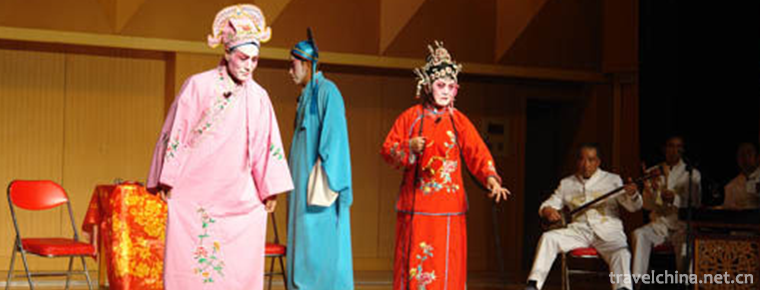
Tongwei Opera
-
Yin Ruins Scenic Area (Yin xu)
Yin Ruins, formerly known as "Northern Mongolia" , is the ruins of the capital city in the late Shang Dynasty of China, located in Anyang City, Henan Province
Views: 212 Time 2018-12-09 -
Longyu Bay National Forest Park
Longyuwan National Forest Park is located in Luanchuan County, Henan Province. It is 165 kilometers away from Luoyang City. It covers an area of 1833 hectares
Views: 171 Time 2019-02-06 -
Badang dance
Badang Dance is a kind of ancient folk dance, which originated from the ancient Qiang people's "Temple Festival" in Dingxi Minxian, southeastern Gansu Province. It is also a sacrificial ritu
Views: 211 Time 2019-04-02 -
martial art of emei
Emei Wushu is one of the traditional Chinese Wushu schools, and its birthplace is Emei, a famous mountain in China. Including the worldwide spread of "Five Flowers"
Views: 143 Time 2019-04-28 -
Fuzhou Arts
Fuzhou jiuyi, also known as jingyi, belongs to one of the five traditional local songs in Fujian Province, which mainly focus on singing, and is popular in Fuzhou dialect area
Views: 424 Time 2019-04-29 -
Handmade Weaving Techniques of Wood Machine Cosmetics
Nanjing Yunjin wooden machine makeup and hand-weaving skills, the local traditional skills of Nanjing, Jiangsu Province, one of the national intangible cultural heritage.
Views: 143 Time 2019-06-07 -
Xiamen lacquer line carving skills
Xiamen lacquer line carving technique is to use old brick powder, large paint and cooked tung oil as raw materials to mix, repeatedly beat into soft and resilient clay (commonly known as "lacquer
Views: 105 Time 2019-06-12 -
Siping Opera
Siping Opera, also known as Sijuan Opera, Siping Opera, Sipeng Opera and Sipeng Opera, is popular in Pingnan County, Zhenghe County, Fujian Province. It is one of the national intangible cultural heri
Views: 129 Time 2019-06-16 -
Legend of Yang Jiajun
The Legend of Yang Jia Jiang is a kind of literature expressed by folk rap in Northwest China. The story of the generals of the Yangs has a long history. It began to circulate as early as the Song Dyn
Views: 146 Time 2019-07-11 -
Yi Folk Songs
Yi folk song is an important carrier of Yi culture and one of the most important forms of inheriting Yi culture. It records the history, science, production and life, traditional customs, philosophy,
Views: 234 Time 2019-07-12 -
Zigong Salt History Museum
Zigong Salt History Museum is located in the center of Zigong, Sichuan Province. It was built in 1959. It is one of the earliest professional museums in the history of Chinese museum development. It is still the only Museum of salt history in China. On May 18, 2017, it was promoted to the third batch of national first-class museums.
Views: 182 Time 2020-10-15 -
Social security in Deyang
In 2018, there were 748000 employees participating in basic endowment insurance, 345000 in unemployment insurance, 752000 in medical insurance, 384000 in industrial injury insurance and 399000 in maternity insurance. In the whole year,
Views: 353 Time 2020-12-14

